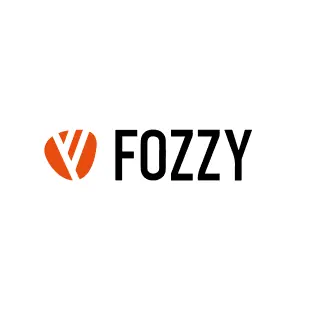
It closed with a direct attack on symbol manipulation, calling not for reconciliation but for outright replacement. Later, Hinton told a gathering of European Union leaders that investing any further money in symbol-manipulating approaches was “a huge mistake,” likening it to investing in internal combustion engines in the era of electric cars. Inductive logic programming was another approach to learning that allowed logic programs to be synthesized from input-output examples. Not all data that a data scientist will be faced with consists of raw, unstructured measurements. In many cases, data comes as structured, symbolic representation with (formal) semantics attached, i.e., the knowledge within a domain. In these cases, the aim of Data Science is either to utilize existing knowledge in data analysis or to apply the methods of Data Science to knowledge about a domain itself, i.e., generating knowledge from knowledge.
It allows a system built with Soar to remember past events and use that information to make decisions affecting the future state of the world. The working memory is a component that stores information about the current state of the system and is used by the production system to make decisions. You can start by reading the documentation for setting up Swi-Prolog so it can be called from Python. These metrics provide an overall view of a model’s performance in terms of both correctly identifying positive observations and avoiding false positive predictions. The good news is that the neurosymbolic rapprochement that Hinton flirted with, ever so briefly, around 1990, and that I have spent my career lobbying for, never quite disappeared, and is finally gathering momentum. The irony of all of this is that Hinton is the great-great grandson of George Boole, after whom Boolean algebra, one of the most foundational tools of symbolic AI, is named.
What is an example of a symbolic activity?
Due to the explicit formal use of reasoning, NSQA can also explain how the system arrived at an answer by precisely laying out the steps of reasoning. Recent years have been tainted by market practices that continuously expose us, as consumers, to new risks and threats. We have become accustomed, and sometimes even resigned, to businesses monitoring our activities, examining our data, and even meddling with our choices.
- Without some innately given learning device, there could be no learning at all.
- On the Origins of AIThe term « Artificial Intelligence » was first used in 1956 at a conference at Dartmouth College in Hanover, New Hampshire.
- Although with time the task of neural networks has become more and more complex, neuro-symbolic AI is here to address the same issue.
- Symbolic AI is a sub-field of artificial intelligence that focuses on the high-level symbolic (human-readable) representation of problems, logic, and search.
- And some of the best-known recent successes in board-game playing (Go, Chess, and so forth, led primarily by work at Alphabet’s DeepMind) are hybrids.
- If for example you are looking up articles on a specific subject then some results may have a publication date attached to the results for that article and some might not.
This lack of explanation becomes worrisome when machines make financial, legal, medical, or autonomous vehicle driving decisions, not to mention military applications. To overcome this obstacle, and in parallel with the development of a more ethical artificial intelligence, more and more researchers are exploring the new research field of « explainable AI ». Deep learning models such as Recurrent Neural Networks (RNNs), Convolutional Neural Networks (CNNs), and Transformer models have been used to achieve state-of-the-art performance on various NLP tasks. These models have been trained on large amounts of text data, which has allowed them to learn complex patterns in human language and improve their understanding of the context and meaning of words.
Five Steps to Balancing Centralized and Decentralized Data Governance
In the examples directories in the Soar Tutorial, this example is spread through eight source files. I have copied them to a single file Soar/blocks-world/bw.soar in the GitHub repository for this book. In line 8 we fetch the values array from the data frame and in line 9 we copy all rows of data, skipping the last column (target classification we want to be able to predict) and converting all data to floating point numbers. In line 14 we copy just the last column of the training data array for use as the target classification. I assume that you have signed up and have access keys that should be available in the environment variables HF_API_TOKEN and OPENAI_KEY. If you don’t want to sign up for these services I still hope that you enjoy reading the sample code and example output.

Artificial Intelligence (AI) is often depicted as a weapon in the hands of businesses and blamed for allowing this to happen. In this paper, we envision a paradigm shift, where AI technologies are brought to the side of consumers and their organizations, with the aim of building an efficient and effective counter-power. AI-powered tools can support a massive-scale automated analysis of textual and audiovisual data, as well as code, for the benefit of consumers and their organizations.
Deep learning and neuro-symbolic AI 2011–now
So, as humans creating intelligent systems, it makes sense to have applications that have understandable and interpretable blocks/processes in them. Therefore, throwing the symbols away may put AI out of circulation from human understanding, and after a point, intelligent systems will make decisions because “they mathematically can”. Also, Non-symbolic AI systems generally depend on formally defined mathematical optimization tools and concepts. That involves modeling the whole problem statement in terms of an optimization problem. However, many real-world AI problems cannot or should not be modeled in terms of an optimization problem.
Transcript: Ezra Klein Interviews Gary Marcus – The New York Times
Transcript: Ezra Klein Interviews Gary Marcus.
Posted: Fri, 06 Jan 2023 08:00:00 GMT [source]
For organizations looking forward to the day they can interact with AI just like a person, symbolic AI is how it will happen, says tech journalist Surya Maddula. Machine learning, the other branch of ANI, develop intelligence through examples. A developer of a machine learning system creates a model and then “trains” it by providing it with many examples. The machine learning algorithm processes the samples and makes a mathematical representation of the data to perform prediction and classification tasks.
What Is Neuro-Symbolic AI And Why Are Researchers Gushing Over It?
The problem of automatic synthesis of formal automata is very important in
Artificial Intelligence. To solve this problem automata synthesis algorithms, which
generate the rules of an automaton on the basis of a generative grammar, have been
defined. The successes in this research area have been achieved due to the develop-
ment of the theory of programming language translation. At the same time, an even
more fundamental problem, namely the problem of automatic induction (inference)
of a grammar on the basis of a sample of language sentences has appeared. This
problem is still an open problem in the area of Artificial Intelligence. Scripts have been proposed by Schank and Abelson [264] as a method for
Natural Language Processing (NLP).
On the one hand, we have pattern recognition, which corresponds to reflex sensorimotor modules, whether these are learned or of genetic origin. On the other hand, we have explicit and reflective conceptual knowledge, often organized in causal models and which can be an object of reasoning. At the end of the 1980s, after a series of ill-considered promises followed by disappointments began what has been called the « winter » of artificial intelligence (all trends combined).
Using GPT-3 to Translate Natural Language Queries to SQL
Table 1 illustrates the kinds of questions NSQA can handle and the form of reasoning required to answer different questions. This approach provides interpretability, generalizability, and robustness— all critical requirements in enterprise NLP settings . Here, we discuss current research that combines methods from Data Science and symbolic AI, outline future directions and limitations.
What are examples of symbolic systems?
Systems that are built with symbols, like natural language, programming, languages, and formal logic; and. Systems that work with symbols, such as minds and brains, computers, networks, and complex social systems.
Python is a very high level language that is easily readable by other programmers. Since Python is one of the most popular programming languages there are many available libraries and frameworks. The best code is code that we don’t have to write ourselves as long as third party code is open source so we can read and modify it if needed. Another reason to use Python, that we lean heavily on in this book, is using pre-trained deep learning models that are wrapped into Python packages and libraries. Rather, as we all realize, the whole game is to discover the right way of building hybrids.
Semantic Web, Linked Data and Knowledge Graphs
The basic building block of a relational database is the table, which is a collection of rows (also known as tuples) and columns (also known as attributes). Each row represents an instance of an entity, and the columns provide information about the properties of that entity. Relationships between entities can also be represented by foreign keys, which link one table to another. Once a model is defined in MiniZinc, it can be solved using a constraint solver which is a software program that takes the model as input and returns solutions that satisfy the constraints. MiniZinc supports several constraint solvers, including Gecode, Chuffed, and OR-Tools, each of which has its own strengths and weaknesses.
Assessing the Field: Exploring the Competitive Landscape of … – Global X
Assessing the Field: Exploring the Competitive Landscape of ….
Posted: Fri, 03 Mar 2023 08:00:00 GMT [source]
These systems are essentially piles of nested if-then statements drawing conclusions about entities (human-readable concepts) and their relations (expressed in well understood semantics like X is-a man or X lives-in Acapulco). One such project is the Neuro-Symbolic Concept Learner (NSCL), a hybrid AI system developed by the MIT-IBM Watson AI Lab. NSCL uses both rule-based programs and neural networks to solve visual question-answering problems. As opposed to pure neural network–based models, the hybrid AI can learn new tasks with less data and is explainable. And unlike symbolic-only models, NSCL doesn’t struggle to analyze the content of images. At first glance, statistical AI presents itself as a form of inductive reasoning, i.e., as an ability to infer general rules from a multitude of cases.
The SQLite Relational Database
In the future, AI systems will also be more bio-inspired and feature more dedicated hardware such as neuromorphic and quantum devices. A neuro-symbolic system, therefore, applies logic and language processing to answer the question in a similar way to how a human would reason. An example of such a computer program is the neuro-symbolic concept learner (NS-CL), created at the MIT-IBM lab by a team led by Josh Tenenbaum, a professor metadialog.com at MIT’s Center for Brains, Minds, and Machines. Neural networks are trained to identify objects in a scene and interpret the natural language of various questions and answers (i.e. “What is the color of the sphere?”). The symbolic side recognizes concepts such as “objects,” “object attributes,” and “spatial relationship,” and uses this capability to answer questions about novel scenes that the AI had never encountered.
- Neural networks are good at dealing with complex and unstructured data, such as images and speech.
- The DSN model provides a simple, universal yet powerful structure, similar to DNN, to represent any knowledge of the world, which is transparent to humans.
- Regarding implementing symbolic AI, one of the oldest, yet still, the most popular, logic programming languages is Prolog comes in handy.
- On the other hand, expressing the entire relation structure even in a particular domain is difficult to complete.
- Symbolic AI algorithms are able to solve problems that are too difficult for traditional AI algorithms.
- Again, this stands in contrast to neural nets, which can link symbols to vectorized representations of the data, which are in turn just translations of raw sensory data.
For our purposes, an academic paper, novel program, or whirling robot fit this definition. As a result, technical explanations are sketched, not finely wrought; there are no equations here. AI software development is now becoming more mainstream than before as it is widely used and accepted. However, this article shows why it is important to understand how these AI operate and choose the right one for them. Whenever there are two categories of something, people do not wait to take sides and then compare the two.
How is symbolic AI different from AI?
In AI applications, computers process symbols rather than numbers or letters. In the Symbolic approach, AI applications process strings of characters that represent real-world entities or concepts.
Life Sciences have long been one of the key drivers behind progress in AI, and the vastly increasing volume and complexity of data in biology is one of the drivers in Data Science as well. Life Sciences are also a prime application area for novel machine learning methods [2,51]. Similarly, Semantic Web technologies such as knowledge graphs and ontologies are widely applied to represent, interpret and integrate data [12,32,61]. There are many reasons for the success of symbolic representations in the Life Sciences. Historically, there has been a strong focus on the use of ontologies such as the Gene Ontology [4], medical terminologies such as GALEN [52], or formalized databases such as EcoCyc [35].

These algorithms along with the accumulated lexical and semantic knowledge contained in the Inbenta Lexicon allow customers to obtain optimal results with minimal, or even no training data sets. In case of a problem, developers can follow its behavior line by line and investigate errors down to the machine instruction where they occurred. Agents are autonomous systems embedded in an environment they perceive and act upon in some sense. The descriptive power of generative grammars has been increased considerably in
Artificial Intelligence. Their standard modifications (extensions) have consisted of
adding attributes to language components (attributed grammars) and defining “multi-
dimensional” generative grammars.

In contrast, deep learning struggles at capturing compositional and causal structure from data, such as understanding how to construct new concepts by composing old ones or understanding the process for generating new data. Critics pointed to SHRDLU’s lack of real-world utility and obvious constraints, given its reliance on a simulated environment. In order to tackle these types of problems, the researchers looked for a more data-driven approach and because of the same reason, the popularity of neural networks reached its peak.
- Class instances can also perform actions, also known as functions, methods, or procedures.
- Some of the prime candidates for introducing hybrid AI are business problems where there isn’t enough data to train a large neural network, or where traditional machine learning can’t handle all the edge cases on its own.
- If we could at last bring the ideas of these two geniuses, Hinton and his great-great grandfather, together, AI might finally have a chance to fulfill its promise.
- The adherents of this approach believed that almost any aspect of human intelligence can be described – brought to a symbol – in such a way that the machine can simulate it.
- System 1 is the kind used for pattern recognition while System 2 is far better suited for planning, deduction, and deliberative thinking.
- The book also pointed to animal studies showing, for example, that bees can generalize the solar azimuth function to lighting conditions they had never seen.
How is symbolic AI different from AI?
In AI applications, computers process symbols rather than numbers or letters. In the Symbolic approach, AI applications process strings of characters that represent real-world entities or concepts.


